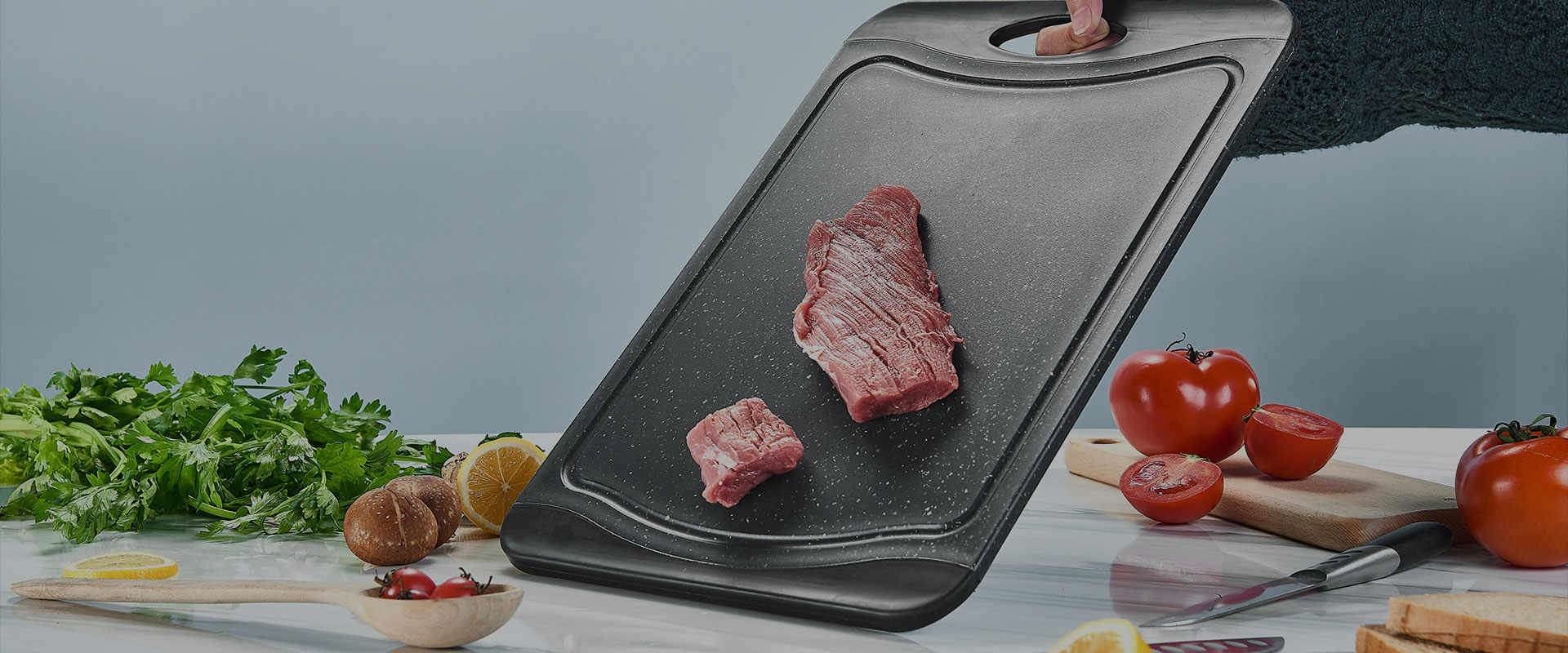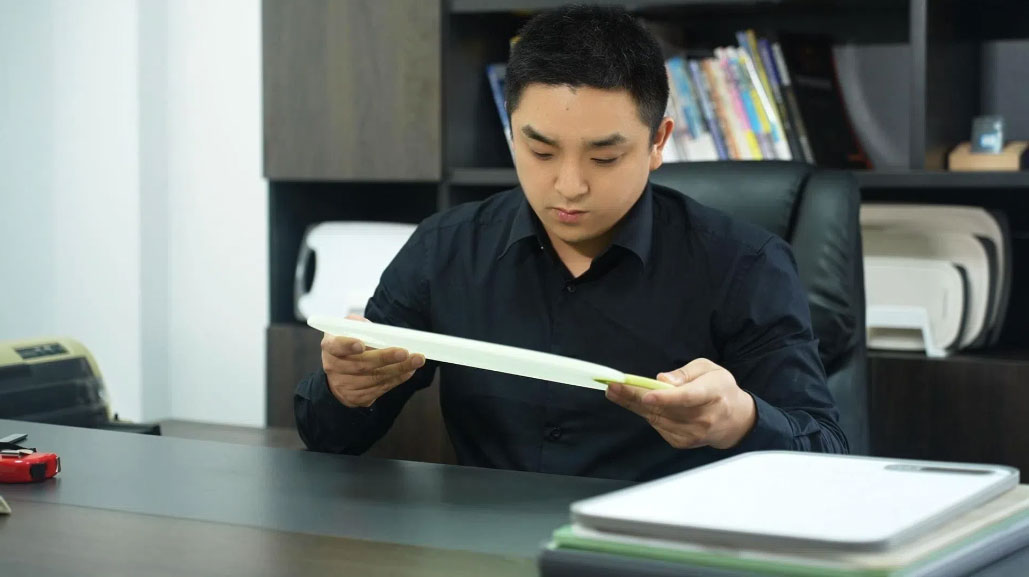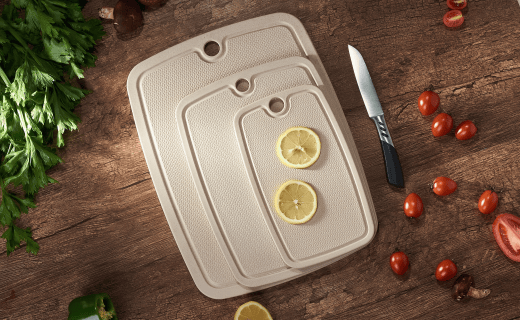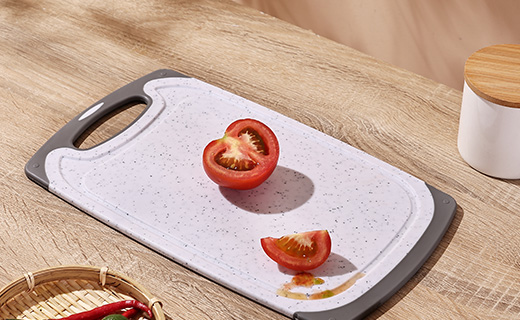 A primary slicing board operates as a primary instrument throughout culinary areas. It supplies a reliable and hygienic prep area, and the perfect board boosts your kitchen performance. With a broad selection accessible, you may feel unsure about how to begin. Don't fret — this resource explains core considerations for picking the right board.
A primary slicing board operates as a primary instrument throughout culinary areas. It supplies a reliable and hygienic prep area, and the perfect board boosts your kitchen performance. With a broad selection accessible, you may feel unsure about how to begin. Don't fret — this resource explains core considerations for picking the right board. Initially, assess the material types available. Popular options include wood, bamboo, plastic, and glass. Every material offers particular benefits and limitations. Hardwood is long-lasting and naturally antimicrobial, yet needs routine oil maintenance. Bamboo supplies a sustainable, robust, and low-weight solution. Polymer chopping surfaces are affordable and readily cleanable but can hasten knife wear. Glass cutting slabs are tough against scratches and dishwasher-safe yet fragile and weighty.
Subsequently, contemplate the dimensions suitable for your prep. A compact board suits minor jobs such as herb or garlic chopping, whereas a big board grants extra room for vegetable slicing or meal prep. Consider your countertop available as well.

Finally, pay attention to design elements. A stylish chopping board can add a touch of personality to your kitchen. Select a surface that harmonizes with your kitchen style and preference.
Plastic, Wood, Bamboo: The Cutting Board Debate
When it comes to choosing a cutting board, there's a longstanding debate between plastic and wood and bamboo. Each material boasts its own advantages, leading to a tough decision for home cooks. Synthetic boards are notable for durability and simple cleaning; timber boards deliver an organic feel and can be sanded and renewed over time. Ultimately, the best choice depends on your cooking habits.
Think about the rate of usage, the type of food prep, and your preferences when picking.
- Plastic boards typically weigh less and cost less than wooden boards
- Wooden boards often look better and last longer when maintained correctly
- Silicone cutting pads provide pliability and stain defense but typically aren’t as durable as plastic or wood
Top Five Cutting Surfaces for Kitchen Experts
For culinary masters, a dependable board is crucial. It functions as the primary prep area for veggies, meats, and various tasks. However, given many choices, picking the right board may be hard. Relax, kitchen enthusiasts — our research produced five cutting boards to enhance your cooking.
- First on our list is...
- Following that is...
- Additionally we list...
- Be sure to note is...
- Concluding pick is...
Preserving Board Sanitation: A Manual
A cutting board is an essential tool in any kitchen, but it's crucial to take care of it properly to ensure safety and longevity. Persistent cleaning curbs cross-contamination by bacteria.
Follow these straightforward tips to preserve your board in peak condition:
- Scrub the board with hot, soapy water after each use.
- Sanitize your board by wiping it down with a diluted bleach solution or using a food-safe sanitizer.
- Allow the cutting board to dry completely before putting it away.
- Store in a dry, well-aired location to avoid moisture accumulation.

Mastering Knife Sharpening on Your Cutting Surface
Obtaining a razor-sharp edge on a cutting board calls for careful, systematic strokes over random swipes. It requires measured pressure together with a steady sharpening angle. Start with securing the sharpening tool at a uniform degree relative to the blade edge. Proceed by guiding the tool along the blade, ensuring the angle remains uniform per stroke. Remember to use steady technique, not raw power, with smooth controlled strokes. As you refine the edge, the blade will feel smoother and won’t catch as much. Don't be afraid to experiment until you find what works best for your knife and sharpening tool. After sharpening, the sharp blade will slice easily and enhance the joy of cooking.
Creating Boards for Culinary Mastery
This month features Artisan Block Co., a respected company focused on producing premium cutting boards. With long experience, they master converting timber into functional, elegant cutting boards. Their dedication to excellence appears in selecting sustainably sourced wood and applying time-honored construction methods.
Every board is uniquely crafted to display the inherent beauty of the wood grain. They supply a broad selection of styles and dimensions to accommodate everyone, from compact daily boards to large chef-grade butcher blocks.
- Further, Artisan Block Co. markets accessories such as designer knife blocks and board oils to maintain the board’s long life.
- For a lasting, premium cutting board to enhance your kitchen, choose Artisan Block Co..
Resilient & Stylish: Modern Board Designs
Upgrade kitchen looks and function with contemporary cutting board designs. The era of simple bulky boards is over; modern options use novel materials and forms that fit any kitchen. Using tough hardwoods like walnut and maple, modern boards resist daily wear and lend sophistication to countertops. From rectangular classics to contemporary geometric designs, there’s a board for every style.
- Choose among a range of finishes to suit your decor.
- Opt for boards featuring integrated juice channels to aid cleanup.
- Purchase a premium board that offers longevity for years.
Green Alternatives: Sustainable Board Options
When picking a cutting board, evaluate its ecological impact. Environmental boards are constructed from bamboo, sustainably managed timber, or recycled polymer materials. Such selections lower environmental footprint and support the planet’s health and longevity.
- Embrace bamboo, a fast-growing and durable material.
- Choose wood from eco-certified managed forests.
- Investigate cutting boards formed from recycled plastics to repurpose trash.

Say Goodbye to Stains: Choosing the Right Cutting Board Material
Material selection is the central factor when choosing a cutting board. A long-lasting, stain-resistant board reduces maintenance effort. Timber boards present a rustic appeal but can retain odors and staining. Bamboo balances durability with natural antimicrobial properties. Polymer prep boards are low-cost yet vulnerable to scratches. Glass cutting slabs are attractive but can crack or break. Choose the board aligned with your needs and kitchen preferences.
Preventing Board Injuries: Safety Guidelines
Keeping your board in good repair is vital for safe food handling. Make it a rule to sanitize boards before and after each usage. Keep distinct boards for raw meats, poultry, and seafood to minimize cross-contamination. Do not cut at the board’s edge with sharp knives since this may crack and harbor bacteria. Replace the board when deep cuts or cracks compromise it.
- Always slice on a secure surface.
- Keep knives well-sharpened to prevent slips.
- Wash hands completely with soap and water following raw food handling.
Boost Your Cooking with a Premium Cutting Surface
An upscale board represents more than just a surface for chopping vegetables. It's an investment that can transform your culinary experience. Crafted from durable and attractive materials like hardwood or bamboo, these boards are built to last. Smooth boards give a stable base for accurate cuts and add visual appeal to your kitchen.
- A premium cutting board can improve the precision of your knife work.
- Safeguard countertops from cuts and wear.
- Show off your kitchen skills with a lovely, useful cutting surface.
